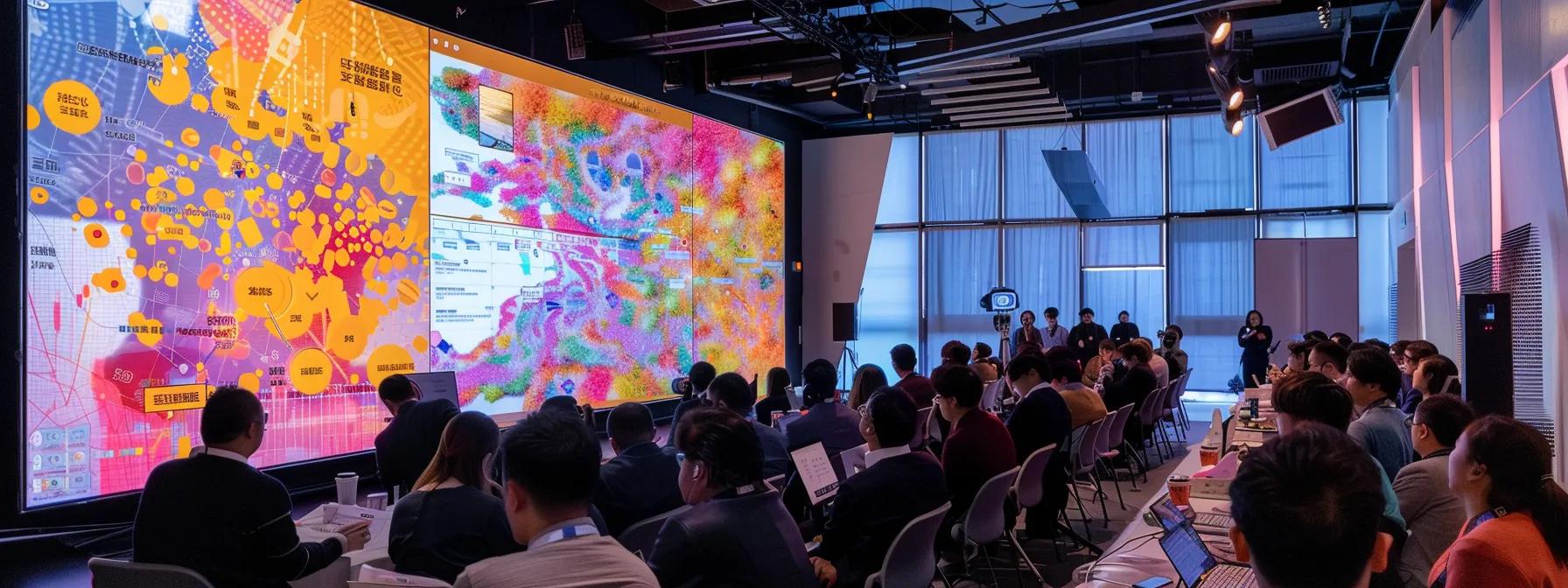In today’s competitive market, many businesses grapple with advertising costs and effectiveness. While traditional methods, such as radio ads, often require substantial investments, emerging solutions like AI ad generators promise improved efficiency at a lower price. This article will explore the price structures of traditional advertising and analyze the cost implications of using AI-generated ugc ads for social media advertising. By examining these contrasts, businesses can make informed decisions that lead to better resource allocation and increased return on investment.
Key Takeaways
- Traditional advertising involves high upfront costs and lower flexibility compared to AI ad generators
- AI ad tools provide precise targeting, reducing overall customer acquisition costs significantly
- Businesses that combine traditional and AI methods can optimize marketing efficiency and enhance engagement
- Personalized marketing through AI tools can minimize wasteful spending and improve return on investment
- Understanding cost dynamics is crucial for effective advertising strategy decision-making in today’s market
Understanding Price Structures of Traditional Advertising Methods

Traditional advertising methods encompass a range of costs that businesses must consider, such as initial expenditures, longevity, and hidden fees that can arise throughout a campaign. Understanding the effectiveness of these methods by industry is essential, as it highlights the risk and innovation, such as ugc ads, involved in reaching target audiences. Additionally, market segmentation and data security are crucial factors that influence the overall effectiveness of traditional campaigns.
Overview of Traditional Advertising Costs
Traditional advertising costs can vary significantly based on the methodology employed, including print, broadcast, and outdoor campaigns. Companies must consider the price of creative development, media buying, and ongoing expenses associated with maintaining a strong market presence. For instance, a television campaign may require substantial upfront investment, yet the longevity and potential reach can be beneficial for brand recognition, making sustainability a key aspect of traditional advertising strategies.
Moreover, the scalability of traditional advertising often presents challenges as businesses expand. As the target audience diversifies, the need for tailored campaigns increases, resulting in additional costs to optimize strategies. Effective search engine optimization (SEO) is less applicable within traditional mediums, emphasizing the necessity for clear metrics to justify expenses and ensure a positive return on investment. Understanding these dynamics helps companies navigate traditional advertising while weighing the benefits against emerging AI ad generators.
Lifespan and Longevity of Traditional Ads
Understanding the lifespan and longevity of traditional ads is crucial for businesses when assessing overall marketing expenses. Traditional advertisements often have a sustained presence, such as billboards or print ads, that continue to engage customers over time. This persistent visibility can foster brand recognition and loyalty, providing a clearer framework for measuring return on investment, especially with the transparency offered by longitudinal campaign analysis.
Moreover, the intuitive design of traditional advertisements allows businesses to convey their messages effectively to their target audience. Unlike fleeting digital placements, the enduring nature of print media or broadcast can create lasting impressions on customers. This longevity presents an opportunity for companies to establish a more profound relationship with their customer base, contrasting the rapidly changing landscape where innovative AI tools, such as chatbots, can provide immediate responses but lack the enduring visibility of traditional advertising methods.
Hidden Costs Associated With Traditional Campaigns
Hidden costs associated with traditional advertising campaigns can significantly impact a business’s overall marketing budget. Expenses such as compliance with the General Data Protection Regulation (GDPR) can arise when collecting consumer data for targeted campaigns. This regulatory requirement adds an extra layer of complexity that digital marketing ventures may not face, underscoring the need for businesses to fully understand their financial commitments when opting for traditional methods.
Moreover, the integration of emerging technologies, like virtual reality or natural language processing, can entail additional expenditures related to the creation and implementation of engaging customer experiences. While traditional ads may provide a sense of permanence, the necessity for ongoing adjustments to meet evolving customer expectations often leads to unforeseen expenses. Businesses must evaluate these cost implications carefully to make informed decisions regarding their marketing strategies:
- Compliance with regulations, such as GDPR
- Unexpected creative development costs
- Upkeep expenses for physical advertising materials
- Need for regular performance assessments
- Integration costs with modern technologies
Effectiveness of Traditional Methods by Industry
In various industries, traditional advertising methods have demonstrated effectiveness in boosting customer engagement through well-established channels. For instance, the retail sector relies on print ads, billboards, and direct mail campaigns to create an omnichannel experience that integrates physical and digital touchpoints. These methods facilitate reach to diverse customer demographics, enhancing brand visibility in a global marketing context.
Sectors like healthcare and finance benefit from traditional copywriting techniques that convey trust and authority. Brochures, television commercials, and even radio ads allow these industries to communicate complex messages clearly and effectively, cultivating a lasting connection with their target audience. By investing in these tried-and-true advertising approaches, companies can leverage the insights from machine learning technologies to optimize their strategies and cater to evolving customer preferences without losing the impactful presence traditional ads provide.
Traditional advertising carries its weight in costs, often heavy and complex. As the landscape shifts, understanding the pricing models of AI ad generators reveals a new world worth exploring.
Analyzing Pricing Models for AI Ad Generators

AI ad generators offer various pricing models that cater to different business needs, including subscription-based pricing and pay-per-use models. Initial costs for setup can vary, as well as ongoing expenses depending on the design complexity and ad type. Understanding these factors is key, as businesses can realize significant long-term savings with AI-driven content creation tools, ultimately improving their marketing campaigns and customer service efforts.
Subscription-Based Pricing Versus Pay-Per-Use Models
When businesses evaluate pricing models for AI ad generators, they often compare subscription-based pricing with pay-per-use options. Subscription models typically offer greater predictability in budgeting, allowing for ongoing access to features essential for personalized marketing campaigns. This is particularly beneficial for organizations that require extensive data collection and analysis, as the consistent access can lead to more effective and tailored advertising strategies over time.
On the other hand, pay-per-use models introduce dynamic pricing that adapts to specific needs, making them attractive for businesses with fluctuating advertisement demands. This option allows companies to scale their spending based on immediate requirements, potentially lowering costs when not actively running campaigns. However, organizations must weigh this flexibility against the complexity of tracking usage and costs, ensuring it aligns with their overall marketing goals, especially when comparing to traditional advertising methods that often lack this level of adjustability.
Initial Costs and Setup for AI Ad Tools
The initial costs and setup for AI ad tools can vary significantly, depending on the technology and features selected. Businesses typically invest in systems that utilize predictive analytics or natural language generation to streamline content creation and increase engagement. This investment allows companies to leverage personal data effectively, creating more targeted advertising strategies that enhance creativity and optimize commerce-related efforts.
In practical terms, organizations need to consider expenditures associated with integrating AI ad systems into their existing infrastructure. For example, initial costs may include software licensing, training staff to use these advanced tools, and ensuring compliance with relevant data protection regulations. By prioritizing a thorough setup process, companies can maximize the benefits of AI advertising while minimizing potential disruptions and ensuring a smooth transition into more innovative marketing practices.
Cost Variability Based on Design and Ad Type
Cost variability in AI ad generators is significantly influenced by the design complexity and ad type chosen by businesses. Custom visuals or advanced interactive elements typically command higher fees due to the increased level of intelligence required to produce them. A hybrid approach that combines traditional advertisements with AI-generated content often leads to fruitful results, maximizing budget efficiency while addressing diverse audience needs.
Furthermore, the ethical implications of using data in online advertising can also alter costs associated with AI ad tools. Businesses need to be mindful of compliance with privacy standards while leveraging customer data effectively. This awareness not only affects upfront costs but also impacts the long-term sustainability of the advertising strategy as companies seek to create engaging content responsibly and within regulatory boundaries.
Long-Term Savings With AI Ad Generators
Long-term savings associated with AI ad generators significantly enhance their appeal in contrast to traditional ads. Businesses utilizing AI tools can streamline their advertising processes, improve productivity, and reduce dependency on external advertising agencies. This efficiency not only lowers costs related to creative development and media buying but also creates opportunities for reallocating budgets toward strategic initiatives that foster innovation.
Additionally, the adaptability of AI ad generators allows companies to avoid regulatory complications often involved with traditional advertising. The capability to produce data-driven campaigns ensures compliance with regulatory standards while effectively reaching target audiences. As businesses become more attuned to consumer behavior and preferences, they position themselves for substantial long-term savings that traditional advertising methods may not provide.
- Streamlined advertising processes improve productivity.
- Cost reduction from lower dependency on advertising agencies.
- Adherence to regulations avoids potential compliance issues.
- Data-driven campaigns target audiences effectively.
- Long-term savings support innovative budget reallocations.
Understanding how AI ad generators price their services sets the stage for a crucial examination. Next, evaluating the cost of these digital tools against traditional advertising reveals deeper insights into their value.
Direct Cost Comparison Between AI Ad Generators and Traditional Ads

Evaluating cost per acquisition is essential when comparing AI ad generators and traditional ads, as it directly impacts the effectiveness of advertising campaigns. Calculating return on investment (ROI) for each method reveals how reach and engagement influence overall costs. Comprehensive case studies of businesses illustrate these dynamics, providing practical insights into how behavior affects advertising strategies.
Evaluating Cost Per Acquisition
Evaluating cost per acquisition (CPA) is a crucial aspect for businesses when choosing between AI ad generators and traditional advertising methods. By utilizing advanced algorithms, AI tools can assess the target market more effectively, optimizing workflows to reduce costs associated with each acquired customer. For instance, businesses employing AI-driven campaigns can achieve lower CPA by leveraging data analytics to tailor their marketing strategy, focusing on segments with higher loyalty potential.
In contrast, traditional advertising often involves higher acquisition costs due to its broader approach and less precise targeting. Companies must analyze the effectiveness of their campaigns, considering how every dollar spent translates into customer conversion. A deeper understanding of CPA helps businesses refine their marketing strategies to ensure they maximize their investment and enhance overall performance:
- AI ad generators allow precise targeting of the audience.
- Cost per acquisition is often lower with data-driven campaigns.
- Traditional ads may present higher acquisition costs due to broader marketing tactics.
- Understanding CPA enables smarter allocation of marketing budgets.
- Evaluating the effectiveness leads to improved customer loyalty.
Calculating Return on Investment for Each Method
Calculating return on investment (ROI) for both AI ad generators and traditional advertising methods requires careful assessment of each system‘s costs and benefits. Businesses using AI tools benefit from enhanced accessibility to data-driven insights, which allow for precise targeting and optimization of advertising strategies. For instance, a retailer utilizing a virtual assistant to analyze customer behavior on meta platforms can achieve a more favorable ROI by efficiently reallocating budgets toward high-performing ad segments.
In contrast, traditional advertising often entails substantial upfront costs but can yield varying levels of return that depend on the campaign‘s reach and engagement. Companies must evaluate how well these ads resonate with their target audience, considering the long-term impact on brand loyalty. By effectively measuring ROI, businesses can refine their marketing strategies to maximize their investments, ensuring they remain competitive in an increasingly data-driven landscape.
Impact of Reach and Engagement on Costs
The impact of reach and engagement on costs becomes evident when comparing AI ad generators and traditional advertisements. Research shows that campaigns utilizing machine learning can optimize audience targeting, resulting in lower costs per acquisition. In contrast, traditional ads often rely on broad outreach, which may lead to inefficiencies and higher expenses as they struggle to engage consumers effectively.
Credibility plays a significant role in consumer trust, influencing the overall success of marketing efforts. Social media campaigns powered by AI technologies can leverage user data to create personalized experiences that resonate with target audiences, ultimately enhancing engagement and driving down costs. Traditional methods, although reliable for generating brand awareness, may not provide the same level of targeted engagement, resulting in higher advertising costs without guaranteed returns.
Comparative Case Studies of Businesses
Case studies reveal striking differences in outcomes when businesses implement AI ad generators compared to traditional advertising methods. For example, a retail company utilizing AI-driven tools experienced a significant uptick in customer satisfaction and user experience, as personalized campaigns enhanced engagement. Conversely, firms relying on traditional ads often faced challenges in effectively reaching their target consumers, resulting in lower overall effectiveness of their marketing strategy.
Another illustrative example is a tech startup that integrated computer vision technology in its AI ad campaigns. By analyzing consumer behavior and preferences, the company optimized its advertising strategy, leading to increased conversion rates and reduced costs per acquisition. Traditional advertising approaches used by similar startups highlighted inconsistencies in engagement and a less favorable return on investment, emphasizing the advantages of innovative solutions in today’s competitive landscape. The key takeaways include:
- Impact of personalization on customer satisfaction.
- Enhanced user experience through targeted strategies.
- Cost reduction with data-driven AI solutions.
- Inefficiencies in traditional methods affecting consumer reach.
- Significant gains in conversion rates with advanced technologies.
The numbers tell a clear story, revealing the weight of costs in advertising. Now, it’s time to see how AI ad generators can shift the balance toward greater value.
Benefits of Choosing AI Ad Generators for Cost Efficiency

Automated campaign management plays a critical role in enhancing cost efficiency for businesses leveraging AI ad generators. By utilizing demographic targeting, companies can significantly reduce wasted spend through precise personalization and targeting. Faster turnaround times improve budget utilization, while scalability and flexibility in ad spending allow for adjustments that align with specific marketing policies and consumer behavior.
These aspects provide businesses with practical insights into optimizing their advertising efforts, resulting in more effective strategies that directly address their audience’s needs and preferences.
Automated Campaign Management and Its Impact on Cost
Automated campaign management revolutionizes how businesses engage with their target audience, leading to significant cost savings. By utilizing AI ad generators, companies can create tailored advertisements that capture consumer attention without the extensive resource investment required for traditional methods. For instance, an efficient email marketing campaign powered by AI can foster stronger connections with customers, ultimately driving higher revenue through targeted messaging.
This technology streamlines the ad creation process, allowing brands to allocate their budget more effectively while ensuring timely delivery of campaigns. The ability to analyze data in real-time and adjust strategies swiftly empowers marketers to optimize their spend, making it easier to achieve desired outcomes. With adaptive campaign management, businesses can enhance their marketing efforts and effectively meet changing consumer demands:
- Streamlined ad creation saves resources.
- Targeted strategies improve customer attention.
- Real-time analytics optimize spending.
- Enhanced engagement increases revenue.
- Timely delivery aligns with market demands.
Personalization and Targeting Reducing Wasted Spend
Personalization and targeting play a vital role in enhancing the efficiency of AI ad generators for small businesses seeking to maximize their advertising strategies. By utilizing data analytics, these tools can identify specific audience segments, allowing businesses to tailor their campaigns according to individual preferences and behaviors. This targeted approach not only improves lead generation but also boosts the brand‘s reputation by creating relevant and engaging content that resonates with potential customers.
Furthermore, personalized advertising reduces wasted spend by ensuring that marketing efforts are directed toward individuals demonstrating genuine demand for a product or service. For instance, businesses can use AI systems to refine their messaging and ad placements, ensuring they connect with the right audience at the right time. This precision not only enhances conversion rates but also fosters a stronger relationship with consumers, ultimately leading to a more effective use of advertising budgets:
- Utilization of data analytics for targeted campaigns.
- Tailored content improves engagement and relevance.
- Reduces wasted spend by focusing on high-demand segments.
- Strengthens brand reputation through personalized messaging.
- Enhances conversion rates and relationships with consumers.
Faster Turnaround Times Leading to Improved Budget Use
AI ad generators enable businesses to achieve faster turnaround times in their content creation processes, thereby optimizing the use of their budgets. By utilizing emerging technologies, these tools can swiftly analyze consumer data and preferences, allowing for the rapid production of tailored advertisements that resonate with the target audience. This speed gives organizations an edge in programmatic advertising, where timely engagement with potential customers can significantly elevate campaign effectiveness and minimize expenditures on less relevant ads.
Moreover, the integration of these advanced systems can alleviate the complexities associated with obtaining consent for data usage. By providing instant access to consumer insights, AI ad generators facilitate compliance with regulations while ensuring that marketing campaigns deliver content aligned with audience expectations. Consequently, businesses can allocate their resources more effectively, ensuring that their budgets not only cover immediate advertising needs but also allow for agile adjustments that respond to market dynamics.
Scalability and Flexibility in Ad Spending
AI ad generators offer scalability that is often unmatched by traditional advertising methods. Businesses can create ads tailored to specific audience segments, leveraging customer data to ensure that marketing strategies evolve with changing trends. This flexibility enables companies to adjust their advertising spend based on real-time performance metrics, providing a significant competitive advantage in dynamic markets where consumer preferences continually shift.
The ability to quickly ramp up or down advertising efforts allows organizations to respond effectively to market demands, fostering brand loyalty among consumers who appreciate personalized interactions. By incorporating competitive intelligence, businesses can refine their campaigns, ensuring that resources are allocated efficiently. This strategic approach not only optimizes budget use but also promotes sustainable growth through enhanced engagement with target audiences.
While AI ad generators offer clear savings, they bring forth their own complexities. Examining these challenges reveals the deeper truths of cost analysis in the advertising landscape.
Challenges and Considerations in Cost Analysis

Cost analysis in advertising presents several challenges and considerations for businesses evaluating AI ad generators versus traditional ads. Performance variability can significantly impact overall marketing costs, influencing how marketing agencies allocate their budgets. Integrating AI tools into existing marketing budgets requires a careful assessment of wealth gained through improved brand awareness and data science insights. Additionally, balancing traditional methods with modern marketing tools is crucial for cost optimization, while staying abreast of future trends in advertising costs and strategies is essential for informed decision-making.
Performance Variability and Its Effect on Costs
Performance variability in advertising tools significantly affects the overall costs associated with marketing strategies. The inconsistency in engagement levels across various channels can lead to unanticipated expenditures, especially when using traditional methods that often require a more substantial upfront investment without guaranteed returns. For instance, businesses utilizing speech recognition technologies in their AI advertising can achieve targeted reach through personalization, thereby reducing waste in their advertising budget.
Moreover, the dependency on precise measurement when comparing AI ad generators with traditional ads becomes crucial. Incorporating personalized recommendations into campaigns allows organizations to adjust their strategies in real time, enhancing the effectiveness and efficiency of their spending. This agility contrasts with static traditional marketing approaches, making it more challenging to adapt expenditures for optimal performance as market conditions shift.
Integrating AI Tools Into Existing Marketing Budgets
Integrating AI tools into existing marketing budgets requires thorough consideration by businesses, particularly when balancing traditional methods with modern capabilities. Digital marketing agencies play a pivotal role in this process, offering knowledge on aligning budgets to maximize value across campaigns. By evaluating current expenditures and potential ROI from AI ad generators, organizations can better position themselves to leverage social media for targeted outreach.
Moreover, this integration necessitates a review of the relevance of traditional advertising approaches in light of evolving consumer behavior. Businesses should explore practical strategies for adapting their budgets to incorporate AI solutions without jeopardizing existing advertising commitments. Doing so enables them to maintain a competitive edge while enhancing overall campaign effectiveness and customer engagement:
- Assess current expenditures and ROI from AI ad generators.
- Leverage digital marketing agencies for expert knowledge.
- Ensure alignment of budgets with social media strategies.
- Evaluate the relevance of traditional advertising approaches.
- Adapt budgets to incorporate AI solutions thoughtfully.
Balancing Traditional Methods and AI for Cost Optimization
Balancing traditional advertising methods with AI-driven automation presents a significant opportunity for businesses to optimize their marketing costs. By integrating storytelling techniques from traditional media with the precision of search engine marketing, organizations can enhance their brand narrative while driving better return on investment. This synergy allows companies to leverage the strengths of both approaches, achieving effective outreach with a well-rounded strategy that resonates with their target audience.
Leadership in advertising involves recognizing when to pivot between established channels and innovative solutions. Businesses that adopt a hybrid approach can assess campaign performance, adjusting tactics based on real-time insights and performance metrics. This strategy not only encourages the efficient use of resources but also elevates customer engagement, ensuring that marketing messages connect with audiences where they are most receptive:
- Utilizing storytelling to enhance brand narratives.
- Employing automation to streamline advertising processes.
- Conducting search engine marketing to target specific demographics.
- Measuring return on investment for both methods.
- Fostering leadership in dynamic marketing strategies.
Future Trends in Advertising Costs and Strategies
As organizations increasingly adopt deep learning technologies, future trends in advertising costs and strategies will likely emphasize the role of personalized experiences. Retail companies, for instance, can leverage advanced analytics to gain insights into consumer behavior, enabling them to tailor their marketing efforts to individual preferences. This trend not only improves targeting efficiency but can also reduce overall advertising costs by minimizing wasted spend on broad campaigns.
Moreover, the integration of AI tools will continue to shape strategic planning in the advertising landscape. Businesses that implement AI ad generators will find themselves better equipped to adapt to market shifts, ensuring that their strategies remain relevant and cost-effective. As personalization becomes a focal point, the effectiveness of both AI-driven and traditional advertising methods will hinge on their ability to provide meaningful connections with consumers, thus redefining how organizations allocate their marketing budgets moving forward.
The challenges of cost analysis reveal a deeper truth about advertising choices. In the final thoughts, the essence of cost comparisons will sharpen the focus on what truly matters.
Final Thoughts on Cost Comparisons in Advertising

This section summarizes the key differences in costs between AI ad generators and traditional ads, providing strategic recommendations for businesses navigating the evolving advertising landscape. It also highlights trends influencing future costs, including the impact of storyboard creation and targeted advertising in social media marketing. By exploring these insights, businesses can better understand the learning curve needed to optimize their marketing approaches effectively.
Summary of Key Differences in Costs
Understanding the key differences in costs between AI ad generators and traditional ads is crucial for businesses aiming to optimize their marketing budgets. AI ad generators offer advantages in segmentation and data analysis, enabling more precise targeting that can reduce overall costs per acquisition. For example, businesses leveraging market research and sentiment analysis can create tailored content marketing strategies that resonate more effectively with target audiences, ultimately lowering wasted spending and enhancing return on investment.
Conversely, traditional advertising methods often entail higher upfront costs and less flexibility in adapting to market changes. The static nature of print and broadcast ads may lead to inefficiencies, as businesses struggle to achieve the same level of audience engagement as AI-driven campaigns that dynamically adjust based on consumer behavior. By comprehending these cost disparities, organizations can make informed decisions about integrating AI tools into their advertising strategies for a more financially sustainable approach.
Strategic Recommendations for Businesses
Businesses should prioritize a thorough evaluation of both digital advertising and traditional methods to determine the best mix for their marketing strategies. Analyzing factors such as target audience, advertising goals, and budget constraints will help organizations make informed decisions. For instance, companies focused on immediate engagement may find that AI ad generators provide significant benefits, while those emphasizing brand loyalty might still see value in traditional approaches.
Furthermore, integrating digital advertising tools with existing practices can yield improved performance and cost-effectiveness. By leveraging AI-driven systems for real-time analytics and personalized content, businesses can better allocate resources, responding promptly to market changes. This adaptive strategy not only enhances engagement but also ensures that marketing budgets are utilized more efficiently, ultimately leading to higher returns on investment.
Trends Influencing Future Costs in Advertising
As businesses navigate the evolving landscape of advertising, several trends are shaping the future costs associated with both AI ad generators and traditional ads. The increasing demand for personalized marketing experiences offers substantial opportunities for organizations to reduce wasted spending by utilizing data analytics. For instance, businesses that adopt AI-powered tools can refine their targeting strategies based on consumer behavior, resulting in more efficient ad placements and ultimately lower costs per acquisition.
Moreover, the integration of advanced technologies, such as machine learning and predictive analytics, is becoming essential in optimizing advertising budgets. Companies implementing these technologies can assess campaign performance in real-time and adjust their strategies accordingly, ensuring that resources are allocated effectively. This adaptability not only leads to significant cost savings but also enhances the efficacy of marketing efforts, helping businesses remain competitive in a diverse marketplace where consumer preferences continually shift.
Conclusion
AI ad generators present a cost-effective alternative to traditional advertising methods, providing businesses with improved targeting and data analysis capabilities. By leveraging AI tools, companies can achieve lower customer acquisition costs while optimizing their marketing strategies based on real-time insights. This approach allows for greater flexibility and adaptability in a rapidly changing market landscape, eliminating wasted spending on broad campaigns. Ultimately, understanding the cost dynamics between AI and traditional ads is essential for businesses aiming to enhance their marketing effectiveness and achieve sustainable growth.